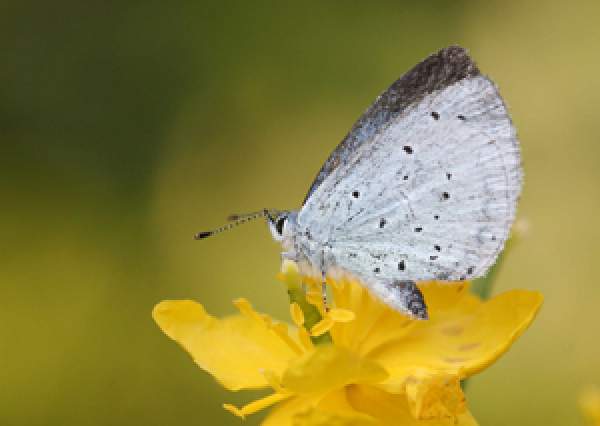Holly Blue
Celastrina argiolus

This is the only species of blue likely to be encountered in most gardens, which is fortunate since the Holly Blue can superficially resemble a Common Blue in appearance. Females have dark black wingtips (lacking in Common Blue) and pale blue undersides. Second brood females are darker in appearance than those of the first brood. Males also have pale blue undersides, but only have a very small amount of black on the upper wing tips.
Fortunately, both sexes have narrow black bands that cut across the white edging of the forewings and this feature is very useful for identification purposes.
The tendency to fly high around shrubs and trees is another useful feature, only rarely shown by other blues.
The general habits of this species perhaps more closely resemble those of the hairstreaks than of the other blues. Adult Holly Blues fly high in the tree canopy, where they feed on aphid honeydew, seemingly in preference to flowers. Individuals will also descend to the ground, to extract salts from patches of damp ground or mud.
The inter-annual fluctuations in the numbers of this butterfly appear to have a roughly cyclical nature, with a periodicity of 6-7 years. This suggests that it may well be the abundance of the parasitic wasp Listrodomus nychemerus (which incidentally appears only to parasitise the Holly Blue) that drives the cycles in abundance.
Despite the strong cyclical nature of this species, there has been a clear long-term increase in abundance, coupled with a northward expansion in its breeding range.






Share this page